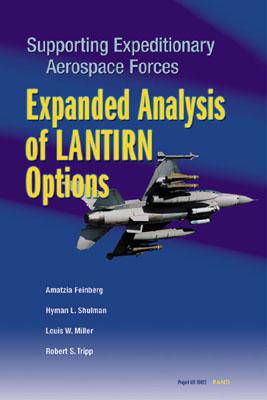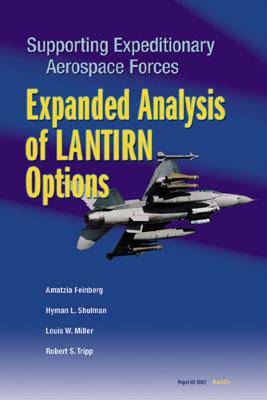
- Afhalen na 1 uur in een winkel met voorraad
- Gratis thuislevering in België vanaf € 30
- Ruim aanbod met 7 miljoen producten
- Afhalen na 1 uur in een winkel met voorraad
- Gratis thuislevering in België vanaf € 30
- Ruim aanbod met 7 miljoen producten
Zoeken
Supporting Expeditionary Aerospace Forces
Expanded Analysis of Lantirn Options
Amatzia Feinberg, Hyman L Shulman, Louis Miller, Robert S Tripp
Paperback | Engels
€ 20,95
+ 41 punten
Omschrijving
This analysis addresses logistics structure alternatives for meeting demands for Low Altitude Navigation and Targeting Infrared for Night (LANTIRN) across a spectrum of operational requirements. The study amends earlier research with new data collected during the air war over Serbia by comparing the current decentralized policy with consolidated options in which maintenance capabilities do not deploy. Consolidating the LANTIRN intermediate maintenance support system may enhance operational flexibility, improve support responsiveness, and decrease the requirements for highly skilled personnel. However, a regional support structure would be more sensitive to transportation delays and require greater cross-organizational communication. New data suggest that the USAF may not have enough equipment to support two coincident wars. The decision to centralize or decentralize LANTIRN repair operations hinges on the capability and risk levels the Air Force is willing to accommodate.
Specificaties
Betrokkenen
- Auteur(s):
- Uitgeverij:
Inhoud
- Aantal bladzijden:
- 86
- Taal:
- Engels
Eigenschappen
- Productcode (EAN):
- 9780833029034
- Verschijningsdatum:
- 30/08/2001
- Uitvoering:
- Paperback
- Formaat:
- Trade paperback (VS)
- Afmetingen:
- 153 mm x 229 mm
- Gewicht:
- 199 g

Alleen bij Standaard Boekhandel
+ 41 punten op je klantenkaart van Standaard Boekhandel
Beoordelingen
We publiceren alleen reviews die voldoen aan de voorwaarden voor reviews. Bekijk onze voorwaarden voor reviews.








